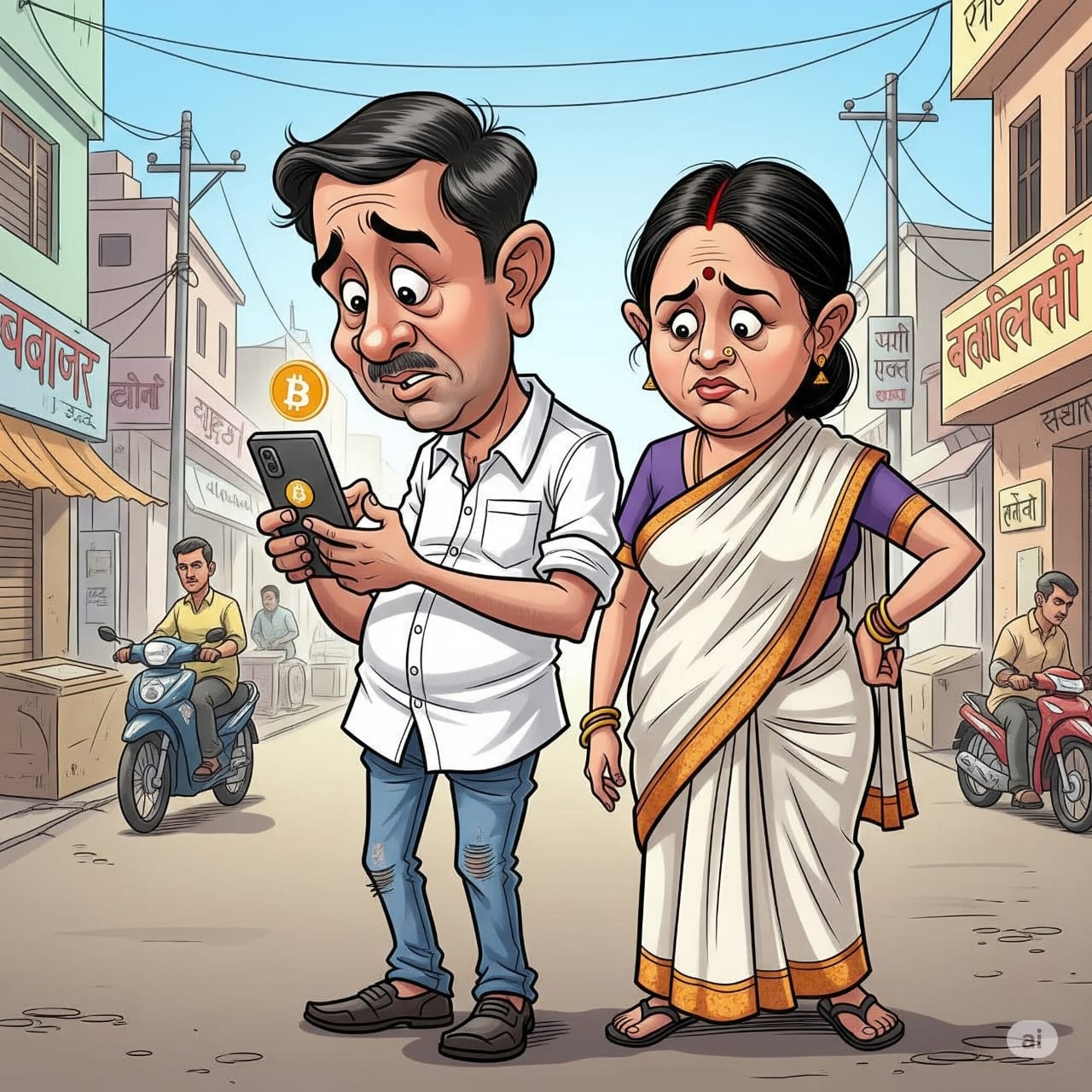
New Delhi
:The crypto revolution in India is no longer confined only to tech start-ups in Bengaluru or investment firms in Mumbai. From the narrow lanes of Jaipur to the by-lanes of Coimbatore and Dibrugarh, a new wave of financial participation is unfolding, which is driven not by metro professionals but by citizens living in Tier-2 and Tier-3 cities who see digital assets as a ladder to financial stability. Industry statistics indicate that roughly 50 percent of India’s crypto trading volume is currently coming from these smaller cities, and that participation is accelerating at over 40 percent annually in several areas.
What’s fueling this boom outside the urban core is not just curiosity or speculation, it is practical economic necessity. In many tier-2 towns, access to traditional banking, capital markets, or even stable incomes is limited. Small business owners, homemakers, and students are using crypto to bypass these structural barriers. The average trade sizes, around ₹10,000, reflect a cautious but hopeful attempt to supplement stagnant wages or expand limited savings.
The change is apparent everywhere, in cities like Patna, Indore, and Surat, crypto has become an everyday topic. Seven of the top ten crypto-active cities in India today are not metros, but smaller towns that have never been involved in the fintech conversation in the past. As smartphones become cheaper and the internet more accessible, there has already been a convergence of sorts. During and after the pandemic, a remote-work culture and an internet-first mindset allowed even remote users to explore crypto markets. Many young Indians now turn to crypto not for quick gains, but because it represents a real opportunity to understand and participate in the global financial ecosystem.
What is more surprising is the level of grassroots energy. Training academies in cities like Nagpur are seeing record enrolment. One trainer alone claims to have taught over 1,500 newcomers since 2023. Platforms tailored for Indian users have also played a role in making onboarding easier. Social media, YouTube tutorials in vernacular languages, and peer-to-peer discussions have helped simplify what would otherwise be intimidating tech. This kind of access and aspiration explains why India is now ranked number one globally in grassroots crypto adoption.
Women are also not left behind in this movement and are joining in greater numbers too. A recent survey recorded a ten-fold increase in female participation, with states like Uttar Pradesh and Rajasthan contributing significantly. For many of these users, crypto represents financial inclusion, independence, and the ability to explore wealth-building avenues beyond traditional gold or savings accounts.
However, this rapidly expanding universe comes with its own shortcomings. For every new investor building their financial future, there are countless others falling into dangerous traps. In smaller cities, there is still a very limited access to the authentic information. Most new users are self-taught or depend on unreliable WhatsApp forwards, unverified Telegram groups, or flashy videos that oversimplify or exaggerate returns. This lack of reliable information has made it easier for scams to spread.
The stories are as widespread as they are worrying. In June 2025, Lucknow police dismantled a racket involving ₹80 lakh in USDT transactions routed through mule bank accounts, where all accused were under the age of 32. In Surat, two youngsters from Jodhpur were arrested after laundering crores in crypto, eventually wired to handlers in China, Pakistan, and Myanmar. And similar to this, multiple frauds have been reported from Jaipur, Ratlam, Bhopal, and Indore, where young and first-time investors were misled by promises of high returns and lost their savings. In one case, an MBA student was tricked by a fake investment group, lured in with small returns, losing all his money. More recently, Berhampur in Odisha joined the list when the state CID Cyber Crime Unit arrested five Surat-based fraudsters in March 2025 for siphoning ₹6.16 crore from a local businessman via a bogus “ZAIF” crypto-trading app.
The issue is further complicated by the absence of regulatory infrastructure. While India leads in adoption, it still lacks a comprehensive virtual digital asset (VDA) framework. Investors have little recourse when things go wrong.
To give India a true opportunity to lead the Web3 economy and protect the country’s most vulnerable investors, the time to act is now. The government must urgently recalibrate its approach to regulation. To begin with, the country needs to establish an Inter-Ministerial Committee consisting of representatives from the Ministry of Finance, MeitY, RBI, and industry stakeholders. The body should mandate consultation with stakeholders, a review of the best practices from international markets, and the development of a cohesive regulating framework for VDAs. In parallel, there also needs to be an immediate overhaul of tax policies. A reduction in the TDS burden, allowance to offset losses, and tiered taxation help bring formalization and instill trust in the investor base.
The heartland of India has enthusiastically and resiliently embraced crypto. As there are no boundaries within which this is happening, this zeal could just as easily come crashing down. But with appropriate guardrails, what began as the crypto craze in Tier-2 cities can evolve into a stable part of India’s digital economy. Regulatory clarity and a balanced tax environment are no longer policy options; now, they are requirements for determining if India will be a lasting leader in crypto adoption or a cautionary tale of a lost innovation.
Author Profile

Latest entries
 BusinessJuly 8, 2025Ai+ Smartphone is here! The phone India has been waiting for.
BusinessJuly 8, 2025Ai+ Smartphone is here! The phone India has been waiting for. DelhiJuly 8, 2025Indian Auto Component industry clocks turnover of Rs. 6.73 lakh crore (USD 80.2 billion) in FY 24-25; grows at CAGR of 14% from FY20 to FY25
DelhiJuly 8, 2025Indian Auto Component industry clocks turnover of Rs. 6.73 lakh crore (USD 80.2 billion) in FY 24-25; grows at CAGR of 14% from FY20 to FY25 BusinessJuly 8, 2025Toyota Kirloskar Motor Unveils Exclusive ‘Prestige Package’ for the Urban Cruiser Hyryder
BusinessJuly 8, 2025Toyota Kirloskar Motor Unveils Exclusive ‘Prestige Package’ for the Urban Cruiser Hyryder DelhiJuly 8, 2025“Demand for intervention from Rahul Gandhi”
DelhiJuly 8, 2025“Demand for intervention from Rahul Gandhi”











